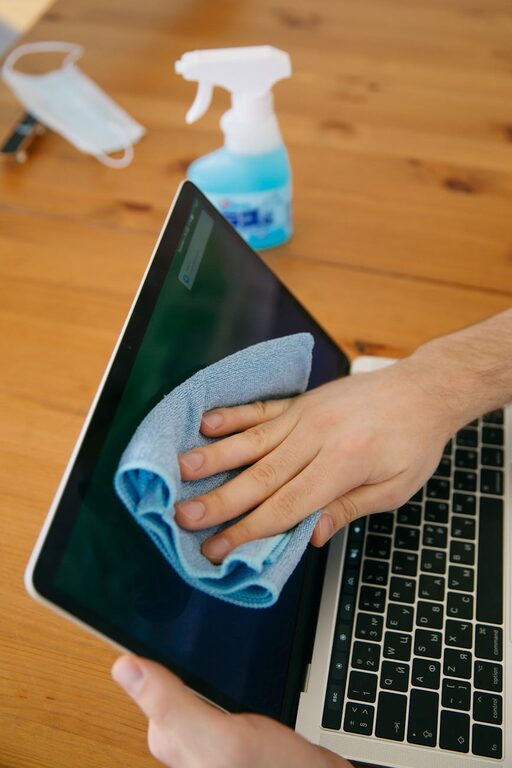Keeping your phone and keyboard clean is essential for both hygiene and device longevity. These frequently touched gadgets can harbor bacteria, dust, and grime, which not only looks unpleasant but may also affect performance over time. Fortunately, cleaning them safely is simple with the right approach and materials. In this guide, you’ll discover step-by-step instructions to clean your phone and keyboard effectively without risking damage.
Why Clean Your Phone and Keyboard?
Phones and keyboards are among the most commonly used items in daily life. Your phone accompanies you everywhere and is handled multiple times a day, while your keyboard is constantly exposed to your hands, food crumbs, and dust.
Cleaning these devices:
– Reduces germs and bacteria build-up
– Improves responsiveness and functionality
– Removes oils and fingerprints that could degrade surfaces
– Extends the lifespan of your devices
Regular cleaning promotes hygiene and keeps your tech looking fresh, making your daily interactions more enjoyable.
What You’ll Need
Before you begin, gather the following cleaning supplies:
– Microfiber cloths (soft and lint-free)
– Isopropyl alcohol (70% or less concentration)
– Distilled water
– Cotton swabs or soft brushes
– Mild dish soap (optional)
– Compressed air canister (optional)
– Toothpick or a soft pick (optional)
Avoid abrasive materials and harsh chemicals, as they can scratch surfaces or strip protective coatings.
How to Clean Your Phone Safely
Phones are delicate and water-sensitive, so cleaning requires care.
Step 1: Power Off Your Phone
Always switch off your device and unplug it from any chargers before cleaning to avoid short circuits.
Step 2: Remove the Case and Accessories
Take off any phone case, screen protectors, or accessories to clean each part thoroughly.
Step 3: Prepare the Cleaning Solution
Mix equal parts of distilled water and isopropyl alcohol in a small spray bottle, or use pre-moistened alcohol wipes designed for electronics.
Step 4: Wipe the Screen and Body
Lightly dampen a microfiber cloth with your solution. Wipe the screen, back, and sides gently. Avoid spraying liquid directly onto the phone to prevent moisture from entering openings.
Step 5: Clean Ports and Speakers
Use a dry cotton swab or soft brush to remove lint and dust from charging ports, headphone jacks, and speaker grilles. For stubborn dirt, compressed air can be used carefully.
Step 6: Dry and Reassemble
Allow your phone and accessories to air dry completely before reassembling. This prevents moisture trapping, which could lead to damage.
How to Clean Your Keyboard Safely
Keyboards accumulate dust, oils, and crumbs from daily use. Here’s how to keep them clean without harming the keys or electronics.
Step 1: Unplug or Turn Off
If you’re using a wired keyboard, unplug it. For wireless keyboards, turn the device off or remove batteries to avoid accidental inputs.
Step 2: Shake Out Loose Debris
Turn the keyboard upside down and gently shake it to dislodge crumbs and particles.
Step 3: Use Compressed Air
Hold the keyboard at an angle and spray compressed air between the keys to remove trapped dust.
Step 4: Clean the Surface
Dampen a microfiber cloth with a solution of mild soap and water or use isopropyl alcohol wipes safe for electronics. Wipe the keycaps and keyboard body gently.
Step 5: Detail Cleaning
For thorough cleaning, dip a cotton swab in isopropyl alcohol and run it around the edges of each key. Use a toothpick or soft pick to carefully remove any stubborn dirt or gunk.
Step 6: Dry and Test
Let the keyboard dry completely before plugging it back in or powering it up to prevent electrical issues.
Tips for Maintaining Clean Devices
– Clean your phone and keyboard at least once a week, or more often in high-use environments.
– Avoid eating over your keyboard to reduce crumb buildup.
– Wash your hands before using devices to limit oil and dirt transfer.
– Use keyboard covers if dust or spills are frequent.
– Store your phone in a clean case and avoid placing it on dirty surfaces.
What to Avoid When Cleaning
– Avoid harsh chemicals like bleach or ammonia-based cleaners.
– Do not submerge your phone or keyboard in water.
– Avoid using paper towels or abrasive cloths that can scratch surfaces.
– Never spray liquids directly on devices.
– Don’t use excessive moisture that can seep into electronic parts.
Final Thoughts
Cleaning your phone and keyboard regularly is a simple practice that improves hygiene and keeps your devices looking and working their best. Using gentle materials and correct techniques ensures you won’t cause any damage. By following this guide, you can make cleaning a safe, quick, and effective part of your tech care routine.
Happy cleaning!

